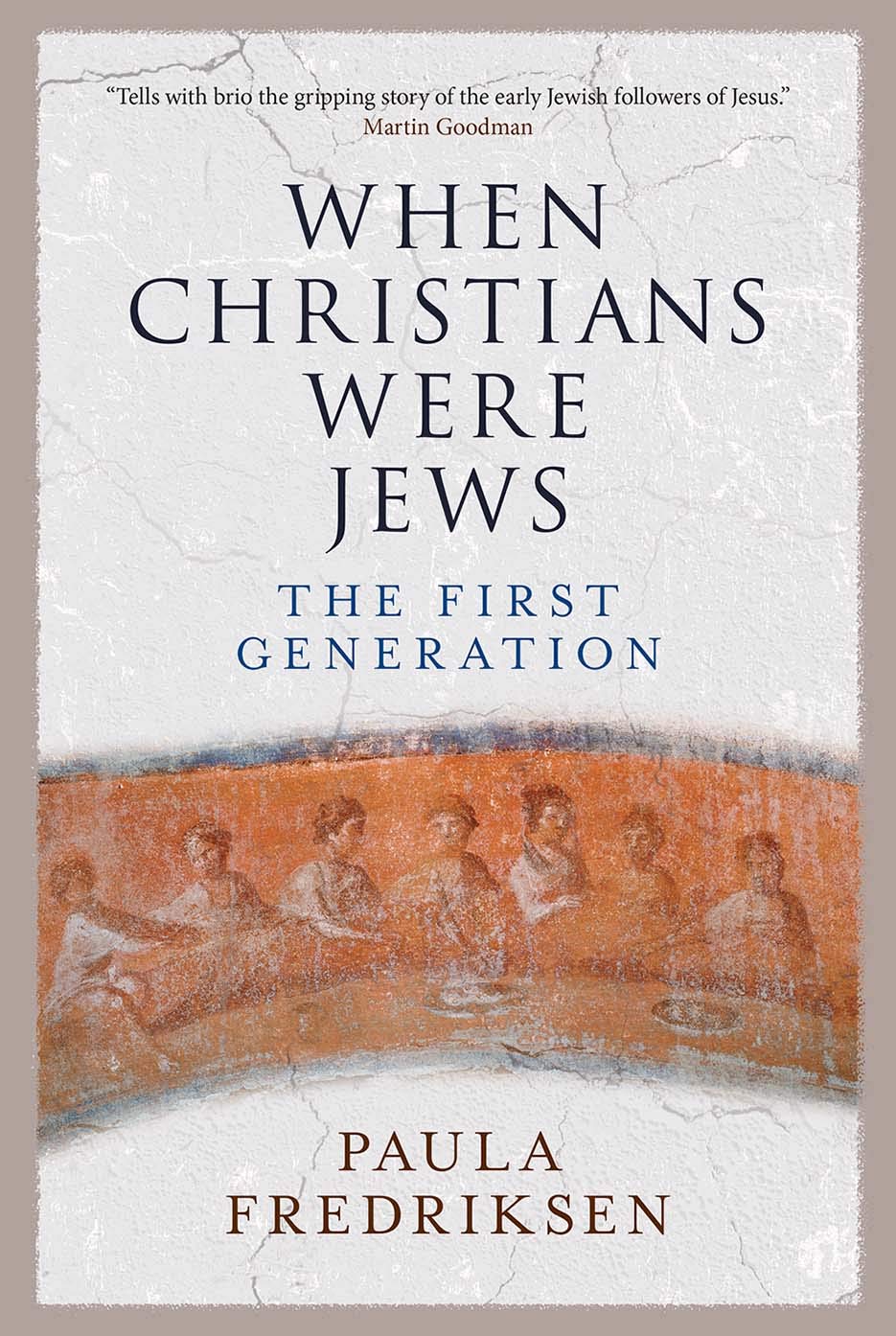When I was a kid, we used to camp for two weeks every summer on Beausoleil Island. On days when the lake was calm, we would sail to Giant’s Tomb where the water was clear and you could see bottom at a depth of four yards or more. But when the wind was up and the water was whitecapped we knew to stay by the fire, tucked away in the little cove where we’d pitched our tent, ‘til the morrow.
If books were boats and seafaring was reading, then Paula Fredriksen’s latest offering, When Christians Were Jews: The First Generation, would be a classic swashbuckling adventure, filled with bountiful scenery and gold-promising maps.
Despite its lack of engagement with opposing scholarship, Fredriksen’s book is skillfully written, tremendously persuasive, and honest in its objectives. Thus, much caution is required. This book has the potential to shipwreck those who are weak in faith.
The tragedy of this book is that strays so far from the safety of orthodoxy. Fredriksen’s basic premise is a good one: Christianity is, at its root, a Jewish movement. Unfortunately, though, she is not a trustworthy authority in our quest to rediscover this truth.
Reconstructing First-Generation Christianity
Fredriksen, a scholar of religious studies at Boston University, has convincingly reconstructed a social world that might have stood behind Paul’s letters, the Gospels, and the book of Acts.
In brief, her thesis is that the original “Jesus community” was a Jewish sect anticipating an immediate apocalypse to usher in the eschatological Davidic kingdom, with Jesus of Nazareth as its reigning monarch. When the kingdom continually failed to materialize, however, the movement dexterously adapted. In a fourfold series of expansions, it transitioned from a Jewish, Jerusalemite, Jesus community into a Gentile, global, Jesus institution―known today as “Christianity.”

When Christians Were Jews: The First Generation
Paula Frederiksen
According to Fredriksen, the eschaton was first “unrealized” when Jesus of Nazareth was crucified rather than coronated (circa AD 30). The second disillusionment occurred when the resurrection appearances of Jesus ceased without the general resurrection of all people (AD 30–32). The third blow struck when Caligula’s desecration of the temple, interpreted as the “abomination of desolation,” didn’t initiate Daniel’s apocalyptic vision (AD 39–40). The final disappointment, which was to inaugurate Gentile Christianity, was the failure of the eternal kingdom to come to Jerusalem in the wake of the temple’s destruction (AD 70).
Fredriksen has composed a neat, compelling, and well-packaged theory. Nevertheless, there are several problems with it. Here are five.
1. It Requires Dismissing Biblical Inerrancy
According to Fredriksen, the letters of Peter and James were written pseudonymously. Paul’s expectation that Jesus would return in his lifetime was proved false. The Gospels were merely revisionist histories, each written after the destruction of the temple to explain why the kingdom hadn’t yet come. Luke-Acts was written last of all to downplay the eschatological emphasis of the original Jesus movement and to legitimate the ongoing mission to the Gentiles.
While Fredriksen takes Scripture seriously, she doesn’t treat it faithfully. Her skepticism toward the Bible as God’s wholly truthful Word gives us good reason to be skeptical of her conclusions. Rather than submitting to the Bible, Fredriksen looks through it to reimagine a world that might have existed behind it and thereby rejects the essence of sola scriptura.
2. It Pits the Jesus-of-Scripture against the Jesus-of-History
Fredriksen has no problem envisioning Paul or the Gospel writers attributing unhistorical words and actions to Jesus to serve their own theological and sociological purposes.
Confidence that the Jesus-of-Scripture is the Jesus-of-history is the bedrock of orthodox faith.
The ground beneath our feet erodes quickly when we give ourselves permission to decide what parts of the Bible are historical and what parts aren’t. Confidence that the Jesus-of-Scripture is the Jesus-of-history is the bedrock of orthodox faith.
3. It Doesn’t Reckon with the Force of the Resurrection
When referring to the resurrection of Jesus, Fredriksen describes these appearances as subjectively conjured encounters. In so doing, she ignores the resurrection’s objective authority over the Jesus movement.
The veracity of Christ’s bodily resurrection sinks Fredriksen’s thesis.
If Jesus was raised from the dead, then the claims of his followers about a coming kingdom are weighty. On the other hand, if his followers experienced a months-long corporate hallucination, then the Jesus movement is nothing more than a sociological phenomenon. The veracity of Christ’s bodily resurrection sinks Fredriksen’s thesis.
4. It Requires the Davidization of Jesus after His Own Lifetime
By identifying seeming inconsistencies between the nativity stories of Matthew and Luke, Fredriksen argues that the genealogical backstory of Jesus of Nazareth was invented to give him Davidic credentials after his death. This Davidic transformation was needed, according to Fredriksen, to invest Jesus with a David-like military persona in keeping with the conquering-king motif the Jesus community promoted, even though such a portrait contradicted the historical person and mission of Jesus himself.
Fredriksen is right to identify the Old Testament expectation of a Davidic king who would conquer with a rod of iron (Ps. 2). However, the Old Testament also expects the coming of a suffering servant (Isa. 53). Contrary to Fredriksen’s thesis, it’s plausible that the Jesus community rightly joined these two portraits in a way that was faithful to Jesus’s self-understanding (Mark 14:60–62).
5. It Proposes a Fourth-Century, Gentile-Driven, Divinization of Jesus
By leveraging Old Testament language about sonship and by appealing to the ancient Roman practice of emperor worship, Fredriksen argues that all Pauline assertions of Jesus’s divine sonship are references to his Davidic pedigree—not to any kind of co-divinity with the Father. For Fredriksen, Jesus only became “God” much later, in the fourth-century councils of the Gentile co-opted church.
By leaping to the fourth century, however, Fredriksen hasn’t adequately defended her claim that Paul didn’t consider Jesus to be fully God. Nor has she addressed the co-eternal and co-divine presentation of Jesus in many other New Testament texts. Although she rightly identifies certain aspects of sonship to be part of an Old Testament royal motif, she fails to interact with the full breadth of biblical texts that attribute full divinity to Jesus from the outset.
Watch Out Ahead
Fredriksen has rightly identified a need to rediscover the Jewish roots of the Christian faith. Unfortunately, all who read her book risk getting stranded on the rocks of disbelief with a faith that’s been shipwrecked by her socio-historical reconstruction.
Before you read When Christians Were Jews, assess your intellectual and confessional stability and invite a studious, faith-filled mentor to help you navigate the squalls sure to come your way.

































